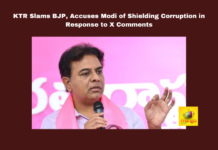The Supreme Court (SC,) on the 2nd of April, struck down a circular passed by the Reserve Bank of India (RBI) earlier this year.
On the 12th of February 2019, the Reserve Bank of India (RBI) passed a resolution giving distressed firms 180 days to draft a resolution plan with their lenders or creditors or be declared bankrupt.
The Supreme Court, while passing its verdict about the RBI circular, used Section 35AA of the Banking Regulations Act. According to the Act, the RBI could not issue a circular which mandated the resolution of distressed firms.
Even if this rule was passed as a part of the Insolvency and Bankruptcy Code (IBC,) the order issued by the RBI was beyond the powers granted to the Bank, said the Supreme Court.
The two judge bench, led by Justice R.F. Nariman, said in a statement, “The impugned circular will have to be declared as ultra vires as a whole, and be declared to be of no effect in law. Consequently, all actions taken under the said circular, including actions by which Insolvency Code has been triggered must fall along with the said circular.”
It is interesting to note, previously, the circular passed by the RBI was initially approved by the Supreme Court. However, on the 2nd of April, the Court retracted its statement, a fact which came as a huge sigh of relief for companies heading toward bankruptcy.
Primarily affecting companies working in the fields of power, sugar, shipping and textile, the circular stated, if these companies don’t clear debts worth more than Rs. 2,000 crores within the stipulated time period, the companies would become defaulters. The companies would then be given 180 days to come up with a resolution plan in tandem with their banks or lenders.
The Supreme Court also said, all the orders given previously according to the circular will be negated.
According to the judges who squashed the circular, the RBI could only make the circular a compulsion if it received the Central Government’s authorisation or if the circular was specific to the defaults. However, since neither of the conditions were fulfilled, the Court had no choice but to reject the order from the Reserve Bank of India.
Stay tuned for more updates!

































